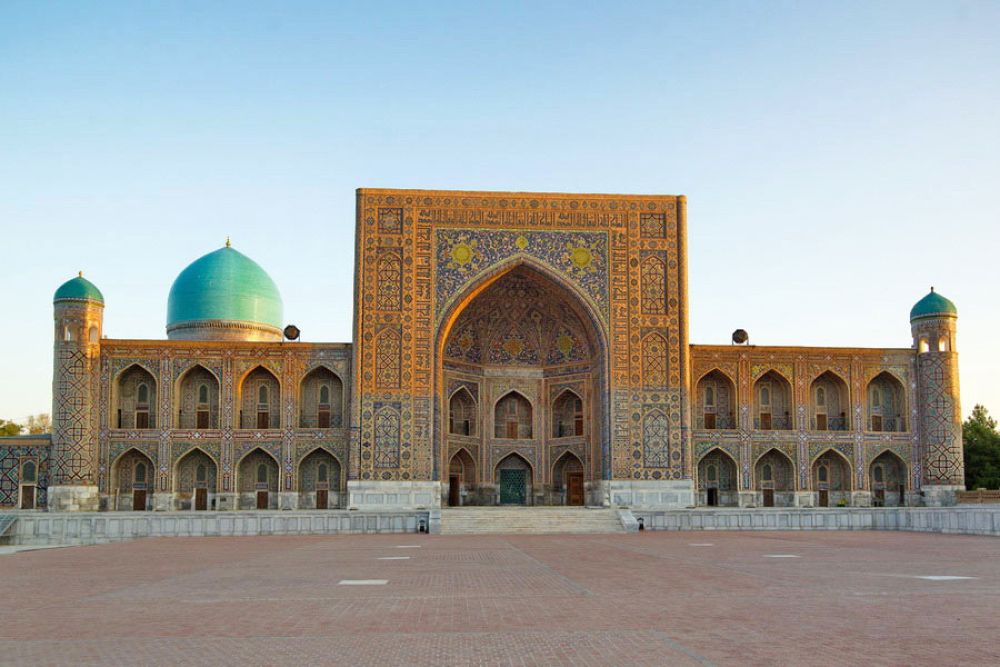

The TillyaKori Madrasah in Samarkand, Uzbekistan, is not just a significant educational institution; it is also a remarkable example of Islamic architecture that attracts thousands of tourists every year. The history of tourism in Samarkand, and specifically to the TillyaKori Madrasah, is intertwined with the region’s rich heritage and the broader allure of the Silk Road.
The madrasah, which dates back to the 17th century, is part of the Registan Square, Samarkand's most famous landmark. The construction of the TillyaKori Madrasah, which translates to "coated with gold," began in 1646 and was completed in 1660 during the rule of the Shaybanid Dynasty. It served not only as an educational institution but also as the grand mosque of Samarkand.
Tourism to Samarkand began to flourish notably with the advent of the Soviet period in the 20th century when efforts were made to promote the cultural and historical assets of the Soviet republics. The city, including the TillyaKori Madrasah, underwent restoration to preserve its ancient architecture and glorious past. In the following decades, as travel became more accessible, Samarkand emerged as a must-visit destination for history enthusiasts and those intrigued by the legendary Silk Road.
In 2001, the city of Samarkand, including the TillyaKori Madrasah, was inscribed on the UNESCO World Heritage List, which contributed significantly to its popularity and tourism appeal. Recognition by UNESCO highlighted the historical importance of the madrasah and helped draw international attention, resulting in increased tourist inflow.
In recent years, Uzbekistan has made concerted efforts to boost the tourism sector by simplifying visa procedures and improving tourist facilities. The TillyaKori Madrasah continues to be a staple attraction for visitors to Samarkand, drawing attention for its intricate blue tiles, golden interior, and majestic domes. Tourists also participate in cultural experiences that showcase Uzbek traditions and cuisine, adding depth to their visit.
One of the challenges faced by the TillyaKori Madrasah and other historical landmarks in Samarkand is balancing the need for preservation with the pressures of increasing tourism. Continuous restoration and conservation efforts are necessary to ensure that this iconic madrasah is protected for future generations. Engaging tourists in sustainable travel practices is also part of the wider strategy to safeguard Samarkand's heritage.
With advancements in technology, virtual tours and online educational resources have made the TillyaKori Madrasah accessible to a broader audience. However, the visceral experience of standing within its walls and witnessing its grandeur is unmatched. Modern technologies are also being leveraged to enhance visitor experiences and manage tourist flow effectively.
Looking ahead, the TillyaKori Madrasah of Samarkand is expected to remain a beacon for travelers from around the world. As global interest in cultural and historical tourism grows, the madrasah's future as a key destination seems both bright and assured. Efforts towards sustainable tourism, educational outreach, and preservation will continue to shape its tourism story.